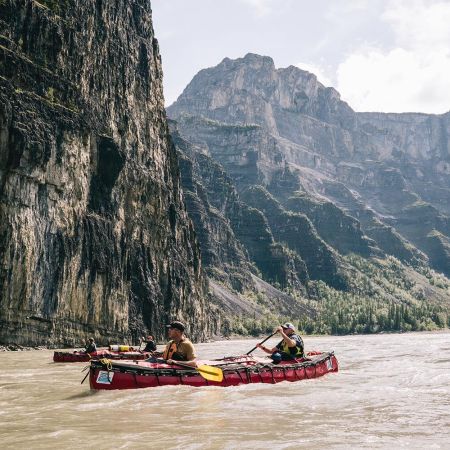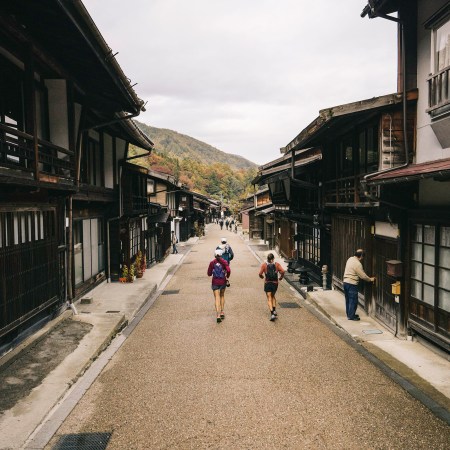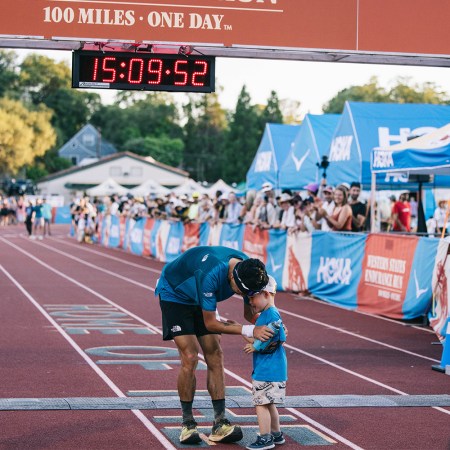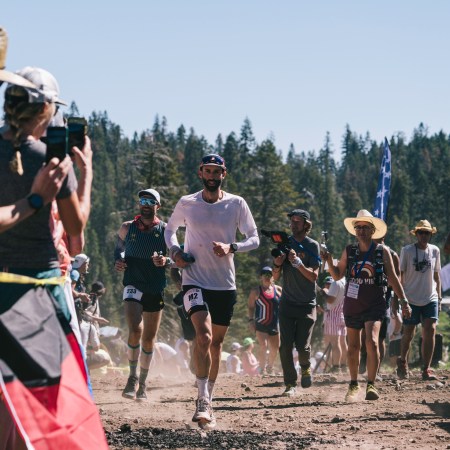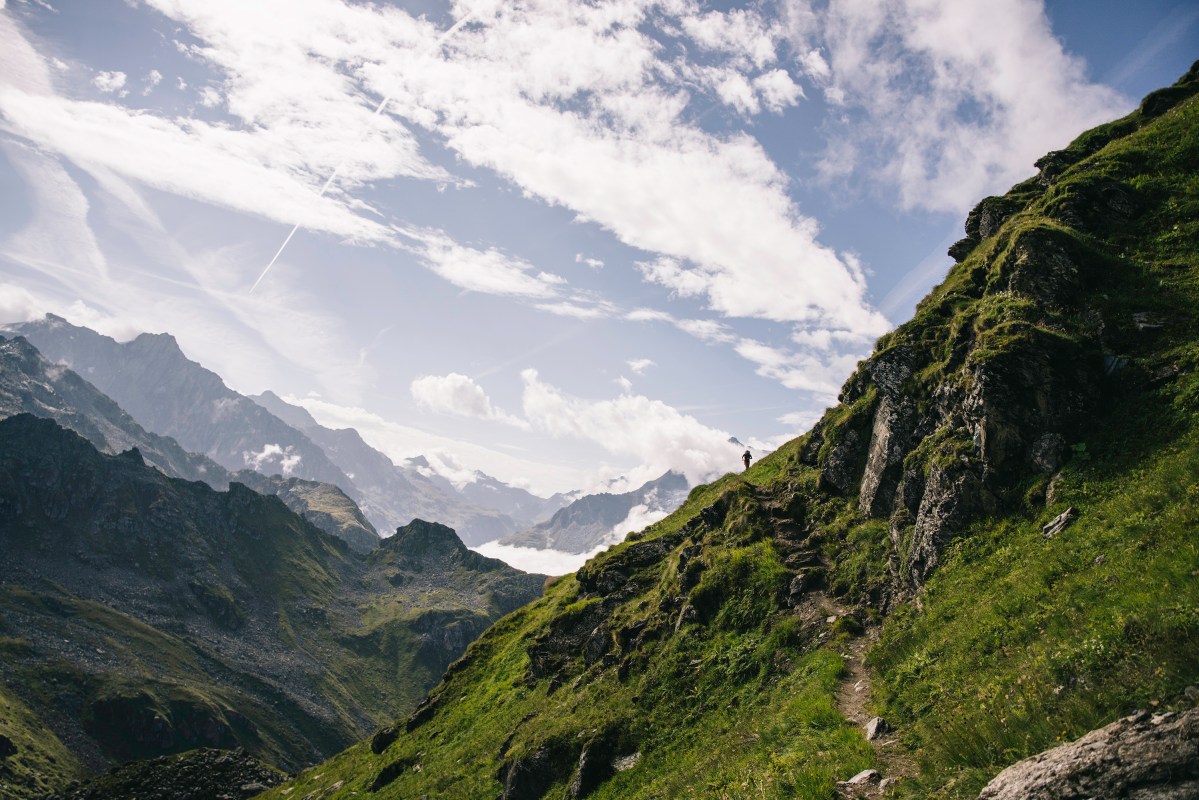
Walking out of the Le Châble train station at a quarter past 10, I took my first breath of cool, alpine air. After a long day in pressurized tubes, sitting shoulder-to-shoulder with strangers, I needed a second to savor the real stuff.
The sky was thick with clouds as it prepared to rain, diffusing the lights of Verbier, just a short gondola ride away. A few valleys over was Chamonix, the most iconic village in the Alps. Both are remarkable destinations in their own right, but on this trip I wanted to escape the hustle and bustle of popular outdoor hubs, and replace them with solitude, silence and a genuine sense of exploration.
I threw my backpack in the back of a taxi as the driver motioned for me to sit in the front seat, waving his hand side to side to signal there were switchbacks ahead. With the main road closed due to flooding, we were forced to take a haphazard detour. Leaving the paved streets for a single-lane gravel road, he shifted the Subaru into first gear, a sign that things were about to get interesting.
As we climbed past small farms and sleeping cows, illuminated only by our dim headlights, my curiosity began to border on concern. To avoid getting carsick, I rolled the window down and distracted myself by humming along with the radio, which was playing Top 40 songs from my college years, a less-than-subtle reminder of poor decisions made back in the day.
An hour or so later, shrouded in mist, we parked below a wooden sign that read “Le Mazot,” a family-run bed and breakfast. Near midnight, the owner walked outside and welcomed me to my room. Located in the small village of Fionnay, population 31, I was finally off the beaten path. After devouring a late-night charcuterie board, I crawled into bed, listening to the sound of rain dance on the roof above.



A day earlier, I’d boarded a red-eye from San Francisco to Zurich with a small pack, a change of clothes and a camera. After landing in Switzerland, I walked outside to the railway station, fully expecting to miss at least one of my four trains. But thankfully, the Swiss system is intuitive and almost always on time. Even though I don’t speak French or German, the two national languages, I ran into zero issues.



Thanks to jet lag, I woke early my first morning. After a coffee and egg breakfast, I threw on my running shoes and windbreaker, and hoped the clouds would clear. My plan was to run 20 miles each day and stay at a different mountain hut each night, allowing me to carry less — no tent or sleeping bag, for example — while eating local food, drying out wet clothes and meeting new folks along the way.



Before heading out on the trail I had downloaded maps to my phone, but soon realized I could have just followed the red and white trail markings, which are every hundred feet or so. The route started with a steep climb up to Col Termin — 3,700 feet in just four miles — setting the tone for what was ahead. Midway up I passed Cabane de Louvie, a mountain hut, but with a big day in front of me, I opted not to stop.



At the col I was greeted by a family of chamois, a species of mountain goat native to southern Europe. After watching them playfully run along ridges for a few minutes, I continued on my way. Staying high around the cirque, I crossed over Col du Bec d’Aigle and dodged a few aggressive herding dogs, before descending into Mauvoisin, a small hamlet, for lunch.



My afternoon started by crossing the Mauvoisin Dam, the highest arch dam in Europe, and then a steady climb up to Col de Tsofeirit. Near the top of the climb I broke through the inversion layer, providing views of the jagged peaks surrounding me. I then ran down to Cabane de Chanrion, which sits at the end of Val de Bagnes and blends into the landscape around it.



When I woke the following morning the hut was enveloped in mist, with no more than 50 feet of visibility. On the descent to Lac de Mauvoisin in the Dranse Valley, I snuck below the clouds and got my first views of the turquoise waters. Following a rolling two-track, I made good time before starting the stout climb up to Col des Otanes, the high point of my trip. Not long after the col I arrived at Cabane Panossière, stopping for coffee and cake, and views of the Corbassière Glacier above.



A few miles later I found myself at the Corbassière Footbridge, a 620-foot span that was built in 2014, as the previous route was left untenable when the glacier retreated. Although it’s rigorously built and completely safe, walking across it is a bit nerve-racking, with hundreds of feet of air below. The day ended with flowy trails to Cabane Brunet, where the hosts welcomed me with drinks and a late lunch.



On my final morning, I ran down into Le Châble to catch the train to my next destination. Although the full loop was just 40-odd miles, the route was incredibly diverse, making it feel much longer. Maybe more importantly, unlike runs at home where I’m focused on speed and time, the trip was measured in a different set of metrics — the number of alpine swims I took, happy cows I passed and gummies I ate each climb. This mentality helped me slow down, stay present and savor each step.

To move faster, I only carried the essentials. Here are my recommendations for your own hut-to-hut trip:
- Momentous Protein Travel Packs: Trails in the Alps are notoriously steep — I averaged over 7,000 feet of vert each day. To recover faster, I brought Momentous protein, conveniently stowed in small pouches.
- Nike Zegama 2 Trail Shoes: Designed for steep ridges, rocky trails and long days, the latest version of the Zegama shoe was perfect for this trip, helping me stay upright even with tired legs and wet conditions.
- Coros Vertix 2S Watch: Easy to use, incredibly accurate and built for extreme weather, the Vertix is a great watch, but what makes it stand out is the battery life. I went the entire trip without charging it once.
- Julbo Density Sunglasses: These photochromic lenses quickly adjust to changes in light, plus they are scratch-resistant and lightweight. Even better, they didn’t slip down my nose, even when I was sweaty.
- Garmin InReach Mini: In worst-case scenarios, an InReach allows you to call for a rescue from almost anywhere. I’m grateful that I didn’t have to test this feature on my trip, but it did provide peace of mind.
- Arc’teryx Norvan 14 Vest: I carried everything in a Norvan, a large running vest that can be cinched tight so it doesn’t bounce as you run. It has enough space for hydration, snacks, camera and extra layers.
- Gummies: IYKYK.
Whether you’re looking to get into shape, or just get out of a funk, The Charge has got you covered. Sign up for our new wellness newsletter today.
